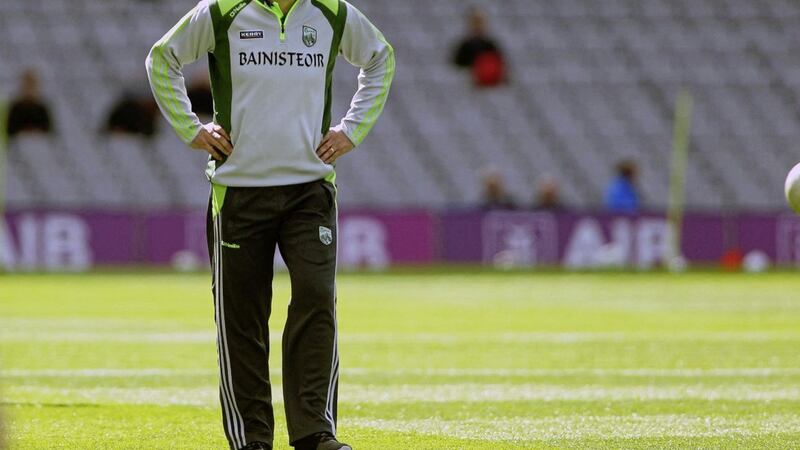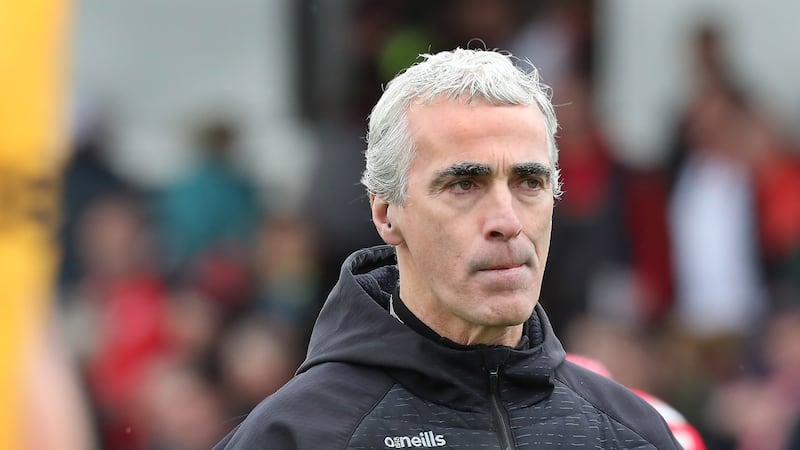THERE was no greater master of sporting psychology than Eamonn Coleman.
He was Paidi Ó Sé and Eddie Jones and Jurgen Klopp all rolled into one. There was the excitable energy and the cheeky grin and the divilment that would have kept a nation going.
But the smile wasn’t empty. Behind it, the cogs were turning.
When he was in charge of Derry, there weren’t the same facilities at Owenbeg that exist now. But even if they had, you sense that he’d have used them a bit less.
Wherever they were training, be it Newbridge, Bellaghy, Ballinascreen or wherever, he’d meet with the club chairman beforehand and get him to drum up a bit of support among the locals.
He wanted a crowd to come out and watch training. Wanted his team to feel the love and warmth of the public. To be connected, to be of them.
That’s what GAA players have always been. They’re of their clubs, their parishes, their friends, their neighbours, their people. One and the same.
Take the like of Dermot Heaney or Richard Ferris or Stephen Mulvenna. Castledawson, Drumsurn, Faughanvale. Three clubs inscribed on the roll of honour, represented by men that were seen as the best of them.
Those players went as representatives for all that had gone before them and worked to bring them to a level where they could mix it with the best in Ireland.
Those training sessions Coleman held weren’t the staged ‘meet the players’ night that we have now, where a handful of players turn out, shake hands, smile and kiss a few babies like a pseudo-celebrity-cum-politician.
It was all real. Right up until the final training session in Bellaghy before the 1993 All-Ireland final, Derry continued to do their work in view of the invited public.
Granted, it was a less cynical world, and a less serious one. But equally, is it any surprise that no Derry team either before or since that time has enjoyed the same level of support?
So credit to Damian McErlain. Last year hadn’t been an easy first season in charge of the Oak Leafers by any stretch.
This pre-season, he’s taken the team on a tour of the county. Despite having facilities to avail of at Owenbeg, they’ve stepped out of the bubble and taken their training sessions around various clubs.
At the weekend past, when Owenbeg’s main pitch was deemed unplayable, the game was taken to Ballinascreen instead of Celtic Park.
It felt, finally, like an admission on behalf of the county board that the city venue was part of the reason for the disconnect.
And then the St Colm’s club promoted their ‘bring a ball’ campaign and allowed the kids to swarm the pitch at half-time.
It followed a growing trend that it would be great to see repeated every single week on every pitch in Ireland. There’s one for the GAA’s marketing department.
These past few weeks have offered a few very small shafts of light against the close-the-curtains-and-tell-them-nothing culture that has been allowed to prevail.
Like the youngest girl running alongside the Limerick subs doing their Gaelic Grounds warm-down after Saturday night’s gripping NHL win over Tipperary. She couldn’t have been more than five, half tripping to keep up with the pack.
Nobody minded that there was a bit of the running scene from Forrest Gump about it. Such an easy gesture to make, does nobody any harm, and one that brought a warmth to the coldest of nights for those young supporters.
Like Peter Keane stepping on the bus in Cavan on Sunday to thank the small, dedicated band of Kerry supporters that had made the long journey north.
He’s already shown an understanding of the Kerry public’s thirst that perhaps his predecessor didn’t help himself by ignoring.
One of Keane’s first mission statements when he took over was that he would take the lock that Éamonn Fitzmaurice had put on the gates in Killarney and throw it over the walls of the stadium.
For ever and a day, Kerry’s training sessions had been open. The late, great Weeshie Fogarty used to step inside and sit in the stand night after night for 50 years, informing himself to educate the masses, without selling the farm.
Even though it was seldom, there were times before Fitzmaurice’s reign when the gates would have been closed. And they will be under Keane too. In a sporting sense, there are some things you have to keep to yourself.
But for too long the inter-county game has been wandering down a dimly lit path towards alienation.
So much of it is self-interest and gobbledygook. It’s designed by managers with the intention of finding a competitive edge, but the side-effect has been damaging.
Never mind the neighbours’ clubs, players have become strangers to their own. To their own communities, their own friends.
The worst thing is that engaging with the public is almost universally welcomed by the players themselves. But instead they’re made take on a mindset of mistrust and suspicion that is completely unnatural to most.
Sometimes we feel like we know sportspeople and then we discover we don’t. Who, before he went into the jungle, knew that Harry Redknapp was who he actually is? That he’s not just a football manager.
Who knew of the impact that losing his parents and then his job had on Steve Bruce before he did an interview with the BBC last week?
We should have known because they’re all the same as us. Vulnerable and human. But you’re drawn to think of professional sports people as different because you hear the odd horror stories and you make assumptions on the rest.
And that was always where the GAA made ground. The players were our neighbours and our friends and clubmates. Like Damian Cassidy falling in with Sean Donaghy in January 1993.
Donaghy was a mad GAA man and the conversation came around about Derry. It went on for 15 minutes. None of your ‘ah sure look it’.
‘I’m telling you now, we’re going to win the All-Ireland this year’ was what Cassidy told him.
It was real. And Sean Donaghy knew it was real, and he put all the more might into supporting his county.
Like any kind of love, it has to be real if it’s to last.
Are we, for instance, seeing Dublin’s lovelessness come back on them just now?
Perhaps there are other factors but to think there were just over 14,000 in Croke Park on Saturday night, on top of last year’s championship attendances, suggests that despite all that they’re achieving, the layers of insulation around these history-making players are now keeping the good out rather than letting it in.
“Inter-county players are not a protected species – they’re just lads from up the road, are they not?” said renowned photographer Mary K Burke when she shared the Limerick video on Twitter at the weekend.
They are all lads from up the road, but it’s had a giant barricade set in the middle of it.
And given that the vast majority of inter-county players will never actually win anything tangible, the whole idea of insulating a team away from its supporters has become a self-defeating philosophy.








